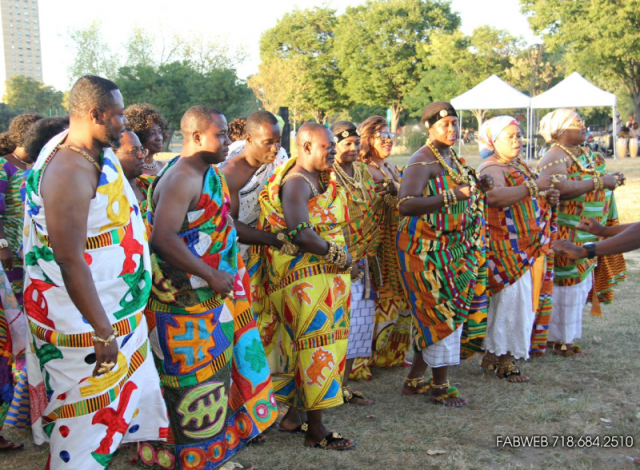Asante
The Asante (Ashanti) are the largest and most powerful of a cluster of AKAN chiefdoms of southern GHANA and IVORY COAST. Originating around Lake Bosumtwi, the Asante migrated to the area around the town of Tafo in the early 1600s. Around 1700, Chief Osei Tutu made alliances with several surrounding kingdoms to form the Asante Union. Included in the union were the Mampong, Bekwai, Kokofu, Dwaben, and Nsuta people. It is legend that Osei Tutu, aided by Okomfu Anokye, established the Golden Stool as the traditional symbol of Asante unity, to be held by the Asante ruler. The stool is kept at the capital city of Kumasi.
By the early 1800s the Asante had expanded toward the Atlantic coast, threatening British control over trade there. Conflicts occurred with British troops, who burned Kumasi in 1874 and sent several important Asante into exile. In 1902 the British made the Asante state part of their colonial empire. Although they allowed the re-creation of the Asante Union in 1935, it became part of the Gold Coast, as Ghana was then called.

There are about three million Asante, most of whom make their living from agriculture. Their main products are gold, cocoa, palm oil, timber, bauxite, and rubber. Many Asante are highly educated and hold important positions in Ghana's government, businesses, and religious institutions. The Asante practice various religions, including Christianity, Islam, and traditional religions; most combine different forms of belief and worship. Of the approximately 150,000 Asante who are Muslim, the majority follow the Sunni school of the Maliki tradition, while a minority believe in the Shafi'i rite. Family inheritance is determined by matrilineal descent. (See also Christianity in Africa, Islam in Africa.)